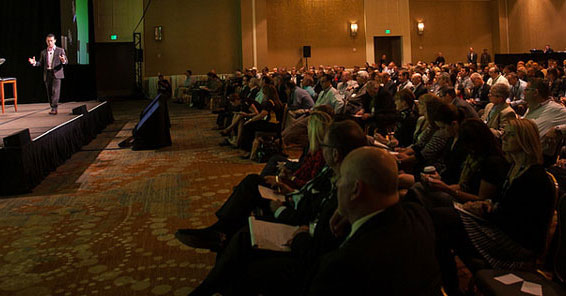Study: Big Data, Mobile, Social Are Transforming the CMO Role
Welcome to the era of the chief executive customer.
On a smarter planet, we've seen how predictive analytics can help transform everything from how we fight crime to how we improve things like healthcare, food safety, and utility grids. For companies, this has raised interesting questions about how to take advantage of the unprecedented streams of information generated by today's customers. These questions are increasingly falling on the shoulders of the chief marketing officer.
Our study of 1,700 CMOs worldwide confirmed that marketers believe their profession is being transformed by "big data," the proliferation of new mobile devices, and the emergence of social media. And only 48 percent of those we spoke with said they felt prepared for today's complexity. However, a new kind of CMO is adapting to these changes and is reinventing the notion of what marketing can do.
From millions to one
Today the vast amount of data that customers are generating lets marketers understand them not just as segments or targets, but as actual individuals.
And those individuals expect more from the brands they do business with - not just service, but hyperpersonalized service. Forward-thinking marketers are connecting the universe of transactional, social, service, and search data to build new levels of customer visibility and understanding - and are then making more precise decisions about whom to reach.
First Tennessee Bank achieved an ROI of more than 600% using predictive analytics to more intelligently target offers to customers.
The data of desire
CMOs used to try to shape customers' desires; now they're actually learning how to predict them. Sophisticated analytics help them take a holistic view of the customer experience and create new methods of engagement, using data to create not just a snapshot of a customer, but a lifetime view that can improve with every interaction. Predictive analytics brings science to the art of customer engagement, helping create a seamless experience that can give customers what they want, when they want it.
A leading apparel company is using analytics to drive sales by optimizing product placements on their website, based on social media and availability.
The branding of culture
But the transparency that companies have into consumer patters is, conversely, met by increased consumer transparency into companies' actual behavior and performance. Social media only serves to amplify those moments in which company promises fall short (or exceed expectations). The CMO now plays an essential role in aligning the company's values and beliefs with its brand promise. They are spending more and more time on "who we are" and not just "what we sell," giving their firms a new degree of social intelligence and self-awareness - essential for any long-term relationship with customers.
By 2017, CMOs will spend more on IT than CIOs (2012 Gartner webinar).
Marketers can now use data to shape everything from how brands interact with customers to the products and services they offer and
The "author" of this article is IBM's full-page ad in the Wall Street Journal (Jan. 15, 2013, page A18). Beyond its interest as a "think piece," the ad also invited readers - CMOs and CIOs in particular - to join an ongoing, online discussion about how marketing and technology can come together to make both stronger. To see or join the discussion, visit ibm.com/smartermarketing or #CMO #CIO on Twitter.
Share this Feature
Recommended Reading:
| ADVERTISE | SPONSORED CONTENT |
STAY CONNECTED
Subscribe to our newsletters to stay informed on the hottest trends in Franchising.
FRANCHISE TOPICS
- Multi-Unit Franchising
- Get Started in Franchising
- Franchise Growth
- Franchise Operations
- Open New Units
- Franchise Leadership
- Franchise Marketing
- Technology
- Franchise Law
- Franchise Awards
- Franchise Rankings
- Franchise Trends
- Franchise Development
- Featured Franchise Stories
| ADVERTISE | SPONSORED CONTENT |








 The franchise listed above are not related to or endorsed by Franchise Update or Franchise Update Media Group. We are not engaged in, supporting, or endorsing any specific franchise, business opportunity, company or individual. No statement in this site is to be construed as a recommendation. We encourage prospective franchise buyers to perform extensive due diligence when considering a franchise opportunity.
The franchise listed above are not related to or endorsed by Franchise Update or Franchise Update Media Group. We are not engaged in, supporting, or endorsing any specific franchise, business opportunity, company or individual. No statement in this site is to be construed as a recommendation. We encourage prospective franchise buyers to perform extensive due diligence when considering a franchise opportunity.